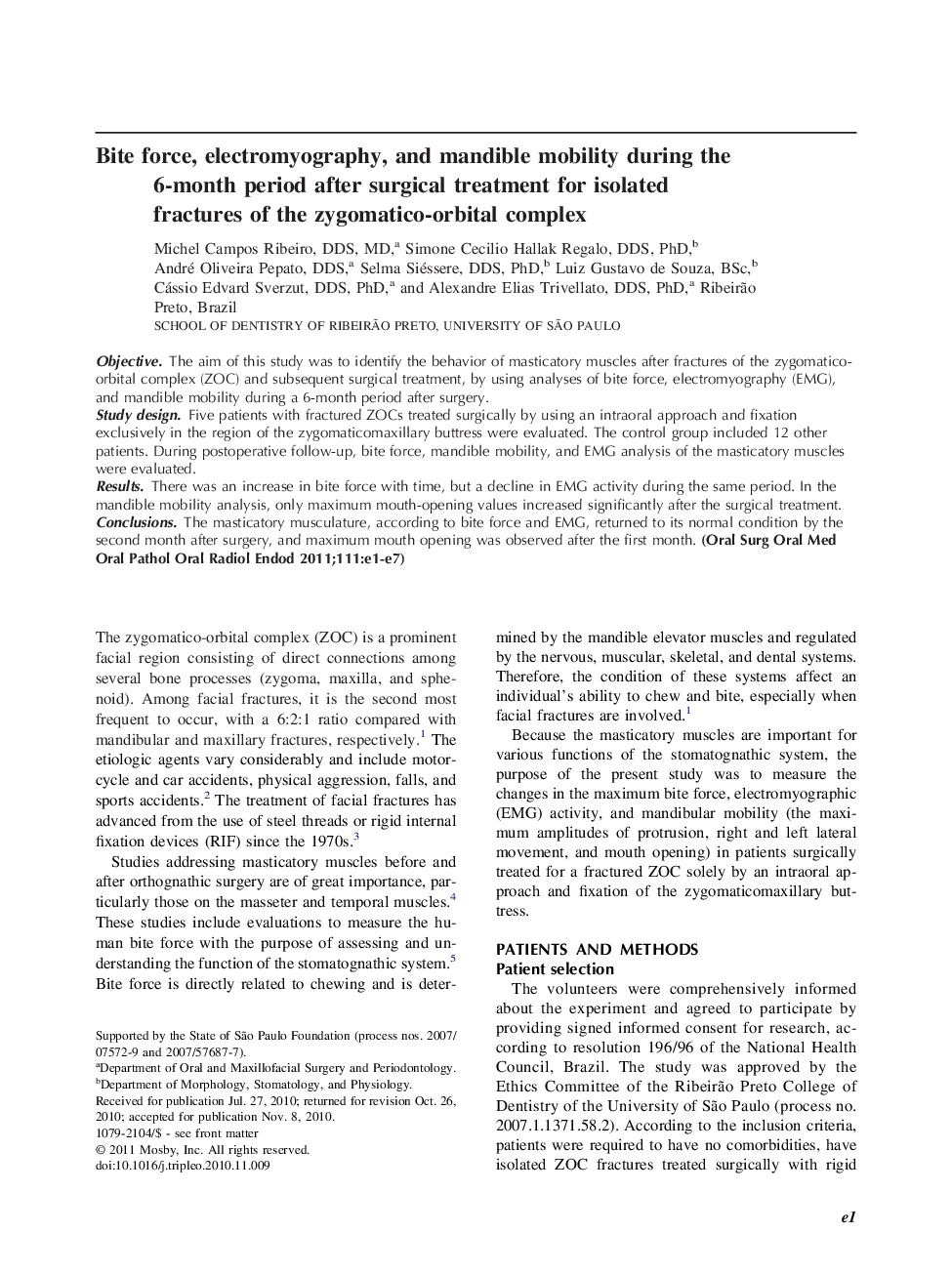| Article ID | Journal | Published Year | Pages | File Type |
|---|---|---|---|---|
| 3167021 | Oral Surgery, Oral Medicine, Oral Pathology, Oral Radiology, and Endodontology | 2011 | 7 Pages |
ObjectiveThe aim of this study was to identify the behavior of masticatory muscles after fractures of the zygomatico-orbital complex (ZOC) and subsequent surgical treatment, by using analyses of bite force, electromyography (EMG), and mandible mobility during a 6-month period after surgery.Study designFive patients with fractured ZOCs treated surgically by using an intraoral approach and fixation exclusively in the region of the zygomaticomaxillary buttress were evaluated. The control group included 12 other patients. During postoperative follow-up, bite force, mandible mobility, and EMG analysis of the masticatory muscles were evaluated.ResultsThere was an increase in bite force with time, but a decline in EMG activity during the same period. In the mandible mobility analysis, only maximum mouth-opening values increased significantly after the surgical treatment.ConclusionsThe masticatory musculature, according to bite force and EMG, returned to its normal condition by the second month after surgery, and maximum mouth opening was observed after the first month.
